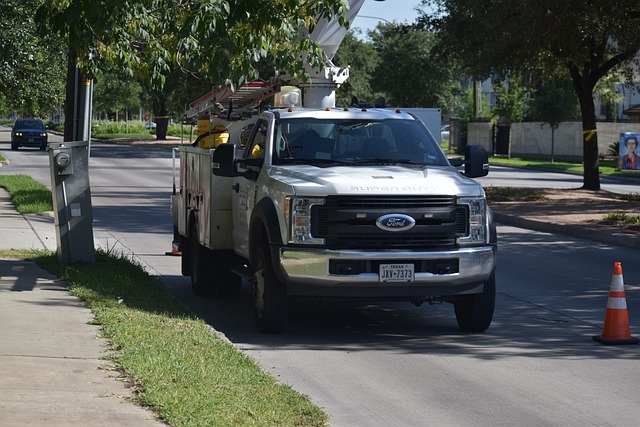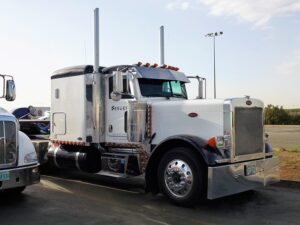Register Car California: Step-by-Step VIN Verification Guide
Looking to register your car in California? This guide will walk you through the process, ensuring a smooth experience. First, understand the state’s specific requirements for car registration, includ…….

Looking to register your car in California? This guide will walk you through the process, ensuring a smooth experience. First, understand the state’s specific requirements for car registration, including the need for successful VIN verification. Gather essential documents and perform a Vehicle Identification Number (VIN) check to confirm vehicle details. Next, select the appropriate registration class based on your vehicle type. Finally, submit your application and fees, readying your vehicle for California’s roads. Remember, a proper VIN verification is key to navigating this process successfully.
- Understand California Car Registration Requirements
- Gather Necessary Documents for VIN Verification
- Perform Vehicle Identification Number (VIN) Check
- Choose an Appropriate Registration Class
- Submit Application and Pay Fees
Understand California Car Registration Requirements

Before registering your car in California, it’s crucial to understand the state’s specific requirements. One key step is ensuring accurate and up-to-date vehicle identification number (VIN) verification. California requires a thorough VIN inspection to confirm the authenticity and history of your vehicle. This process involves verifying the vehicle’s make, model, year, and other essential details through the vehicle’s unique 17-character VIN code.
A mobile vin verifier can play a significant role in this procedure by providing convenient and efficient VIN inspection services. These mobile services allow you to complete the verification process quickly, often at your convenience, without needing to visit an official agency. By ensuring accurate VIN data, you set the stage for a smooth car registration experience in California.
Gather Necessary Documents for VIN Verification

Before registering your car in California, you’ll need to ensure that all necessary documents are ready, and one crucial step is gathering the proper paperwork for VIN (Vehicle Identification Number) verification. This process is essential as it helps establish the vehicle’s history and ensures compliance with state regulations. For a smooth registration experience, collect the following:
1. The vehicle’s title or proof of ownership.
2. A valid driver’s license or identification card.
3. Your most recent vehicle registration (if applicable).
4. A completed California Vehicle Registration Application form.
5. Documentation for any modifications made to the car, if applicable.
Additionally, consider using a mobile VIN verification service or a portable VIN scanner to facilitate this process. These tools allow for quick and convenient checks, ensuring that your vehicle’s history is accurate and up-to-date. With these documents prepared, you’re well on your way to successfully registering your car in California.
Perform Vehicle Identification Number (VIN) Check

Before you begin the registration process, it’s crucial to perform a Vehicle Identification Number (VIN) check. This step is essential for ensuring that your car is legitimate and has not been reported as stolen or had its identity altered. A VIN verification involves cross-referencing the unique 17-character code with official databases to confirm its authenticity.
Consider opting for a mobile VIN verification or vin inspection service, which offers added convenience. These services send a technician to your location, allowing you to conduct the check without having to visit a dealership or DMV office. This option is particularly beneficial if you have a busy schedule or prefer a hassle-free experience while ensuring your car’s registration goes smoothly.
Choose an Appropriate Registration Class

When registering your car in California, understanding your vehicle’s classification is key. The state divides vehicles into several classes based on factors like age, type, and use. The most common categories include private passenger cars, motorcycles, and commercial vehicles. Each class has specific requirements and fees associated with registration.
One important step in the process is completing a Vehicle Identification Number (VIN) verification. This involves checking the vehicle’s history using its unique VIN to ensure it’s free from any legal issues or undisclosed damage. You can conduct this vin inspection yourself with a mobile vin verifier, making it convenient and time-saving. Whether you’re buying a new or used car, understanding your registration class and completing necessary verifications like a vin check will streamline the registration process in California.
Submit Application and Pay Fees

After completing your vehicle’s registration form, it’s time to submit your application and fees. This crucial step involves several key actions. First, ensure that you’ve accurately entered all required information, including your personal details and vehicle specifications. Next, attach the necessary documents like proof of insurance, vehicle ownership history, and any applicable fees.
California offers various payment methods for your convenience. You can typically pay online through their official website, by mail, or in person at a local Department of Motor Vehicles (DMV) office. Once your application is approved, you’ll receive your registration documents, which include your unique Vehicle Identification Number (VIN) verification. Consider using a mobile VIN verifier to cross-check this information for added peace of mind.
Registering a car in California involves understanding specific requirements, gathering essential documents, and completing a VIN verification process. By following these steps—from meeting identification criteria to selecting the correct registration class and paying applicable fees—you’ll be well on your way to securing your vehicle’s legal status in the Golden State. Remember, accurate vin verification is crucial for a seamless registration experience.







